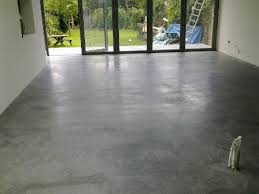3 Types Of Concrete Flooring You Should Know About

Flooring can either make your space look wonderful or straight-up dull. This is why many architects in Australia give utmost importance to materials for flooring purposes. One material that can instantly make any space look attractive is exposed concrete.
It’s sturdy and can be used for multiple applications. For example, it’s perfect for warehouses, art galleries, garages, and even bedrooms or living rooms. It gives any space a very luxurious look and finishes.
To find out more about polished concrete check out Policrete.
There are also many different types of exposed concrete finishes and polishes that you can go for, based on your needs and requirements.
The Many Types of Concrete Flooring
When designing or even revamping your space, it’s advisable to only go for materials that will best benefit you in the long run. Going for this material will enhance your space and provide you with a strong foundation.
You can also seek advice from Australian designers in the formative stages of development to select only the best material.
Generally, polished finishes are considered often for concrete floors. To elaborate, the following are the various and popular types of polishing for concrete flooring:
1. Diamond Polished Concrete
One of the significant reasons concrete is gaining widespread popularity is its high-traffic durability. Apart from this, it’s also a very cost-efficient option than many other flooring options.
Going for a polished concrete floor will also leave you with a few benefits, such as:
- Stain resistance
- Improves reflectivity
- Reduces energy consumption
- Slip resistance
- Easy maintenance
This technique helps build a smooth and universal finish for the concrete. Along with this, it also allows many different levels of shine. It is done with the help of diamond grinders. Once that is over, the surface is polished with extremely good buffers to provide a shiny finish.
2. Powder Floated Finish
This type of finish takes place right before the fresh concrete sets in. Additionally, the timing is essential to keep in mind in this technique. This helps in achieving a glossy finish.
Unlike the mechanical version of polishing, this technique is also possible manually in small spaces. You can also achieve more polish and finish by using various surface sealants.
As a result, you will find that the colour of the floor now looks more vibrant and solid. More importantly, what determines the hue is the ingredients of the concrete. For example, the mix includes cement, sand, and other pigmentation.
3. Texture and Design
Creating grain and texture in floors can be done by exposing the aggregate in the concrete. This is particularly helpful when areas require a stronger resistance regarding slipping, specifically when it is not dry.
Another critical consideration in this process is the practical application. Along with this, the amount of power needed for a particular project also matters. So, if you need a top-quality concrete floor, you also need appropriate specifications of the concrete mix.
Moreover, you can choose from the many different types of mixes, along with various blends of coloured clusters and binders.
Here are some of the common techniques to achieve this:
- You can achieve exposure by choosing to either wash or brush the surface away from the mortar of the floor. It is one of the simplest methods of exposing the aggregate.
- The next technique is by using surface retardants. They offer more control to the aggregate. Texture patterns on the surface can be created using stencils.
Flooring is one of the most critical aspects of building any space. The kinds of materials you use and the appropriate amounts can make a lot of difference in the quality. So, if you want your foundation to be durable, go for the highest-quality exposed concrete.
Lastly, if you find it challenging to choose, you can always reach out to professionals in Australia for help.



